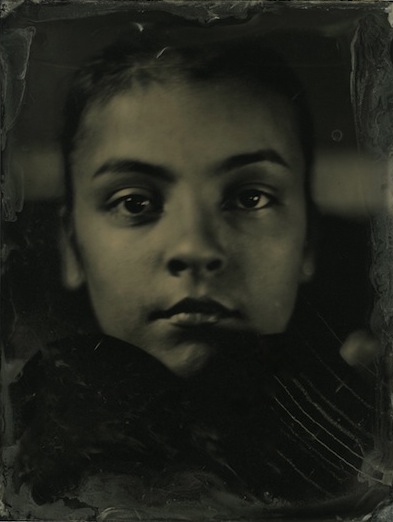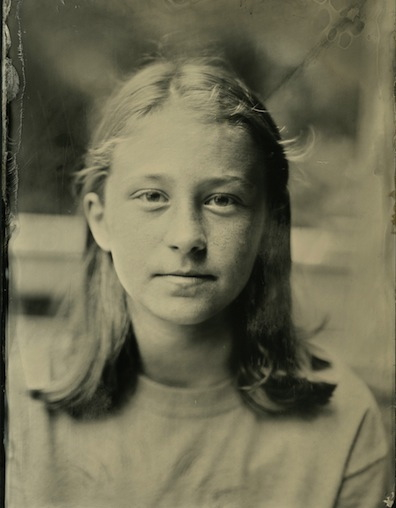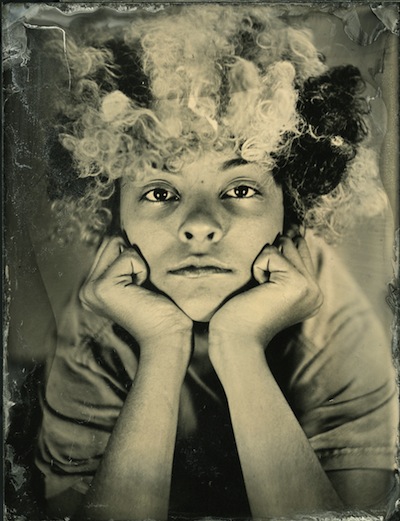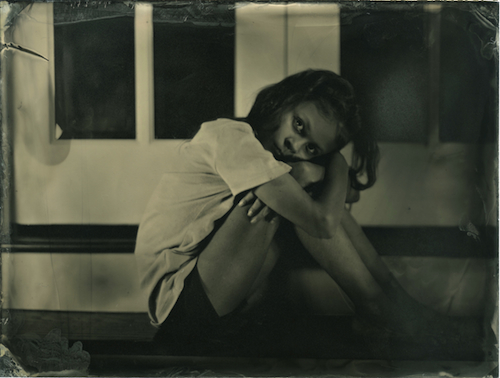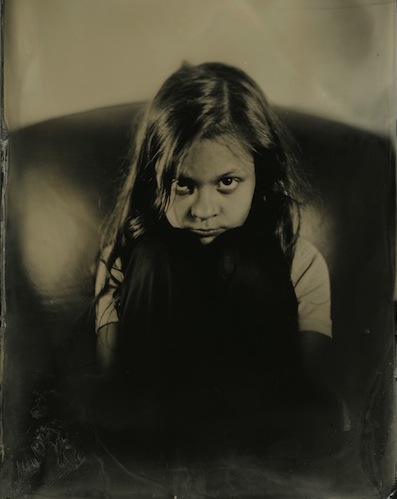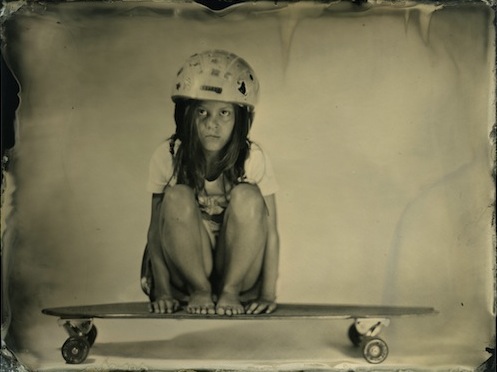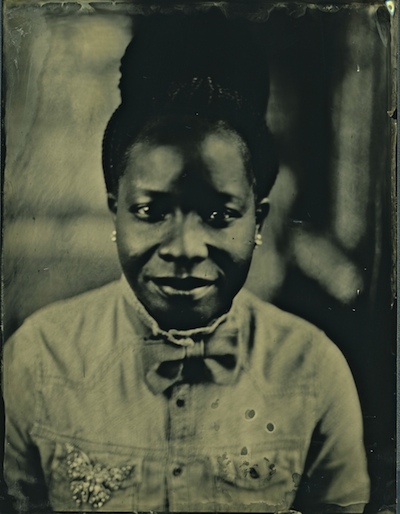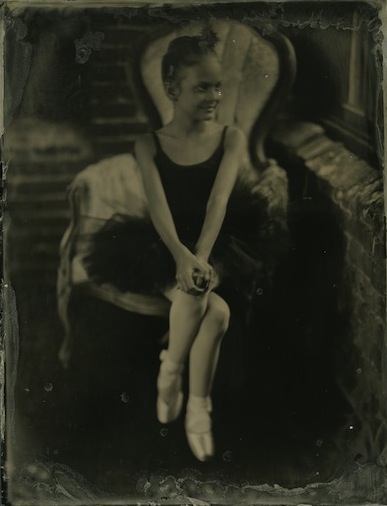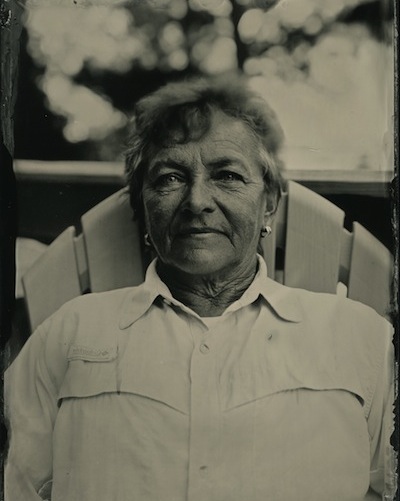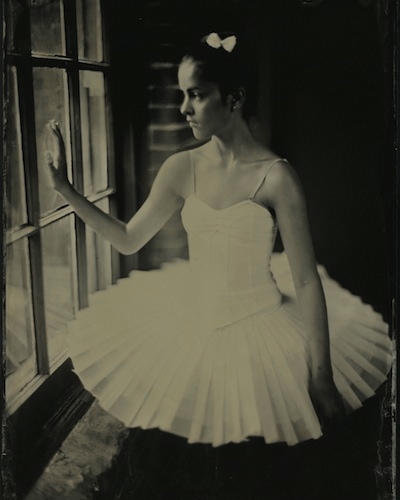Why I use a 160 year old process in 2015?
Longevity - The fact that many images from the 1860's are still around proves that the process is durable.
Uniqueness - Each image is one of a kind, with a look that cannot be duplicated.
Tone - The range of tone available using this process is unmatched by digital or film.
Real - Each image is an object that you can hold and has a connection to the actual moment it was created.
What it is:
Tintypes and ambrotypes are produced using the wet plate collodion process. This process produces a positive image on blackened metal or glass that is inserted into a large format camera for exposure. The process requires images to be exposed and developed while they are still wet. This means that the images are seen minutes after the exposure has been made, and are on the actual exposed metal or glass plate. Tintypes were the original instant photo; the photo booth and polaroid of the 1850's!
Because each photograph is individually hand-crafted, no two are exactly alike. Just like the original tintypes, these photographs will last for generations and become part of your own history. In an era where cell phone pictures and Instagram reigns, your images will last centuries!
What to Expect:
Each plate takes about 15-20 minutes to produce, and involves pouring the collodion, sensitizing, making the exposure, developing, and rinsing. Subjects must remain completely still from 5 to 12 seconds during the exposure, but are free to watch the process in action. You will be able to see & choose the photos you want, but the final varnishing step in the process will have to be completed after the plate is completely dry hours later. Your completed photograph will be mailed directly to you once finished.
Also Expect your plate to last 150+ years! Many tintypes and ambrotypes made in the 1850's are in excellent condition today.
What is included:
The sitting fee includes one original tintype or ambrotype & a digital scan for sharing on-line. I will shoot as many plates as possible in the scheduled time. Typically 3-4 plates per hour. You are not obligated to buy all the tintypes or ambrotypes made, but can choose the best ones for varnishing.
What to Wear:
The chemistry involved in the process does not react to color the same way as traditional film, so avoid colors like red, all black and all white. Good colors are blue, green purple, pink, and patterns are fine. The image is the reverse of the actual setting, so any lettering will be reversed, as will you!
Portrait Sessions in the Los Angeles Area
Contact For Details
brian @ briancuyler.com

